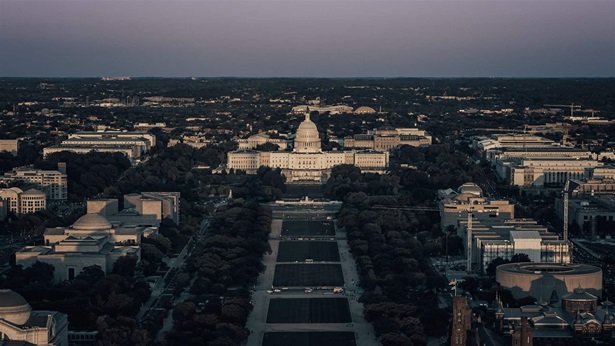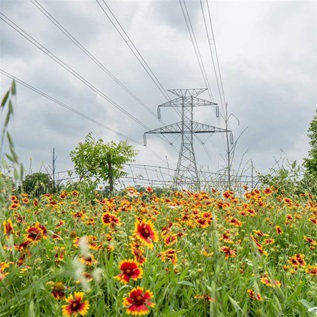Broadband Subsidy Programs Help Deliver Affordable Internet Access
Research points to benefits of collaboration and targeted enrollment for effective implementation

State and federal programs have improved the availability of high-speed internet, but cost remains the primary barrier to broadband adoption for low-income households. To address this, the federal government has created consumer subsidies, such as those included in the Affordable Connectivity Program, to ease cost burdens. Research indicates that simplifying enrollment, working closely with community partners, and implementing a single, national policy focused on increasing access all can help boost participation.
To better understand the potential strengths and shortcomings of specific policies, The Pew Charitable Trusts partnered with the University of Southern California’s Annenberg Research Network on International Communication and the California Emerging Technology Fund in 2021 to research the subject. The work is part of the Measuring the Effectiveness of Digital Inclusion Approaches (MEDIA) project, a multiyear research effort to evaluate the impact of various digital inclusion strategies. Incorporating best practices into ongoing interventions will help both deliver assistance to consumers and network operators and boost sustainable broadband access in the years to come.
Researchers examined three approaches to subsidies: consumer subsidy programs, public benefit obligations, and public procurement programs. The results show that robust enrollment campaigns, community-first partnerships, and meaningful participation from internet service providers (ISPs) are essential components of successful programs.
First, the research identified the need for a holistic approach to sustain and increase enrollment in subsidy programs. For example, more than 40% of eligible low-income households participated in the Alabama Broadband Connectivity (ABC) program, demonstrating that the program targeted those families most in need of assistance. In addition, the MEDIA study focused on the Emergency Broadband Benefit (EBB) showed higher enrollment in metropolitan households than rural ones. That may be because fewer ISPs offer such programs in rural areas, meaning policymakers have an opportunity to address this gap.
The review of California’s Lifeline program showed that 87.8% of enrollees qualified through their participation in Medicaid, Supplemental Nutrition Assistance Program, or Supplemental Security Income. The results suggest that enrolling customers automatically based on their participation in other need-based programs could enhance efforts to help more people get broadband access.
In addition, evaluating the work of the Housing Authority of the City of Los Angeles (HACLA) underscores how, without policy intervention directed by federal and state governments, low-income communities will continue to struggle to acquire and maintain high-speed internet access. Here, 80% of residents reported cost as a primary barrier to obtaining home broadband, with limited provider competition and higher service costs in high-poverty regions of Los Angeles as key factors. However, a pilot project involving HACLA and an internet service provider helped establish new wireless connections in 10 housing authority communities. Eligibility in the program was tied to residency, eliminating the need to provide additional documentation, while a federal subsidy ensured that the service was free for six months and $15 a month after that. Two years after its launch, more than half of residents—2,701—were participating in the program, indicating that with sufficient speeds and limited enrollment barriers, low-income customers will stay online after free trials run out.
These case studies underscore the link between subsidy enrollment and an ISP’s commitment to participation. Similarly, the research indicates that aggressive outreach efforts, such as those in Alabama, paired with efficiencies in enrollment, such as those identified in California's Lifeline program, could more effectively target households and incentivize provider participation.
Second, the research validates the need for embedded, authoritative partners—often referred to as trusted community voices—to administer initiatives targeting low-income families. The work specifically concluded that these voices can help alleviate challenges to awareness, trust, and enrollment. For example, the Alabama study showed that communities with higher participation in the state’s ABC program had a significantly higher enrollment rate in the federal Emergency Broadband Benefit program during the COVID-19 pandemic; that rate can be attributed to the use of public officials and partners to reduce information and administrative burdens placed on enrollees.
A case study looking at the Riverside Unified School District (RUSD) in California found that providing devices and training to students and families led to 98% of students participating in at least one distance learning activity during the pandemic. These services included a troubleshooting hotline and digital literacy training, as well as information on how to apply for low-cost broadband plans. Together, the findings emphasize the role that existing community support organizations can play in expanding broadband access to those most in need.
Third, the findings assessed the utility of public benefit obligations as a tool for increasing broadband access in low-income communities. Public regulators such as the Federal Communications Commission often include a provision of affordable internet plans or other public benefit obligations as a condition of mergers. In a review of such plans, researchers found that public benefit obligations were effective only under certain circumstances.
Success appears to depend, in part, on how well the plans are marketed or publicized. For example, in 2016, Frontier Communications acquired a company that expanded its territory in several states, including California. California required Frontier to provide an affordable broadband subscription for low-income households in its new project areas—about 1.1 million households throughout the state. More than 102,000 low-income households signed up for service, but researchers estimated that 19%—19,500 households—did so specifically because of the affordable plan and associated marketing.
Researchers concluded that this was likely due to marketing and outreach completed in partnership with local organizations and under the oversight of a California state agency. The MEDIA team further concluded that government-wide policies that also include certain internet speed requirements, such as the Affordable Connectivity Program, may be more effective at increasing adoption in low-income households than one-off programs that set individual obligations in specific circumstances.
The study involving the Los Angeles housing authority showed that ISPs could leverage subsidy programs to boost partnerships with other corporations and nonprofits to deliver technology and digital literacy programs as a part of their public benefit obligations. These partnerships included private funding for network buildouts, device distribution, technical support, and online services training—much like the services RUSD provided. Moreover, the analysis found that more than 90% of subscribers to ISP low-cost service plans were also enrolled in the Affordable Connectivity Program as of October 2022, an accomplishment attributed to the ability of ISPs to incorporate enrollment as a part of their sign-up process and the effectiveness of this particular policy intervention. This case points to the critical role that government subsidies play in encouraging ISPs to deliver affordable broadband solutions to all Americans.
Evaluating previous policy interventions aimed at narrowing the digital divide is essential in facilitating future advancements. The MEDIA project addressed this need by highlighting the program and regulatory mechanisms expanding broadband access nationwide. These findings point toward the crucial role of broadband policy moving forward in ensuring that all Americans have access to high-speed internet, which now more than ever is an essential service.
Colby Humphrey works on The Pew Charitable Trusts’ broadband access initiative.
















